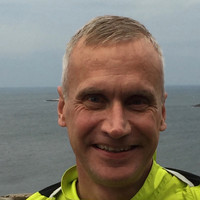UKÄ's site visit at KTH
KTH will soon be visited by the Swedish Higher Education Authority (UKÄ) to review how well our system for quality assurance of all education works. This time the assessment panel will meet a broader selection of employees at the KTH schools. The site visit takes place on 25-27 November. The employees who shall participate will be invited to a preparatory meeting.
UKÄ's review
The purpose of this autumn's review is to identify the strengths and areas for development of our system for quality assurance of education and to make recommendations to KTH for further development.
The feedback from UKÄ, in the form of a statement from the assessment panel and a decision on a three-level scale from UKÄ, is expected at the end of March 2020. This will be valuable information about which areas KTH needs to pay special attention to in the ongoing development work.
Selected supplementary tracks after first site visit
At the first site visit on 1 October, the assessment panel focused on gaining a deeper understanding of KTH's quality system. The assessment panel asked questions about our processes in quality work at different levels and they wanted to form an impression of KTH's quality culture.
The assessment panel interviewed KTH's top management, the five heads of school, representatives from THS, a selection from GA and FA, new and old as well as external members of the Faculty Council, KTH's chair, internal and external members of the board, managers at GVS and employees from the library, among others.
UKÄ 's evaluation method means that the assessment panel, after the first site visit, selects a number of supplementary tracks for further review. The supplementary tracks are quality assurance processes at one or more levels within a higher education institution.
The assessment panel selected continuous follow-up and development of degree programmes as two supplementary tracks. The assessment panel wishes to follow these paths within all schools at KTH. A more detailed description of the two paths can be found in the fact box at the bottom of the page.
Preparing for upcoming site visit
The second site visit intends to focus on the two supplementary tracks that have been mentioned. The assessment panel also wishes to ensure that they have really understood previous information correctly, and that more employees at KTH will have the opportunity to share their impressions of KTH's quality system with the assessors.
This time, the assessment panel will meet programme directors, teachers of courses, students and doctoral students, managers at different levels in schools and employees in, among others, the Equality Office.
The talks will revolve around highlighting KTH's systematic processes and routines - not individual people's tasks and performances. The interviews should not be considered as any form of interrogation, but as a conversation that gives the opportunity to clarify what KTH does and why.
KTH will organize a meeting before the coming site visit in November. It is intended that all those who are interviewed should be given the opportunity to ask questions and be given information about UKÄ's method and practical preparations for the interview sessions.
The President or Dean will call the persons whom UKÄ has selected for interview to the meeting. The aim is for all employees to be able to enter the interview situation on 25-27 November feeling well prepared.
The Faculty Council with Anders Forsgren, Dean and Sofia Ritzén, Vice Dean at the forefront, has the overall responsibility for driving the development of KTH's quality assurance work forward.

Anders Forsgren on how he looks at KTH's quality culture in relation to our quality system:
– KTH's skilled employees contribute to research and education in different ways. For me, a quality culture means creating a positive sense of community and insight into the value of belonging to KTH. The quality system shall demonstrate that we work systematically to attain high quality in research and education. It is important that individual employees feel that they are an important part of this. We need to have a living discussion about what a quality culture means.

Sofia Ritzén on the ways in which UKÄ's review of KTH's quality assurance work is valuable to KTH:
– KTH shall have an effective quality system that supports us in ensuring high quality in education at all levels and in our research. We have chosen to be inspired by UKÄ 's model for what it should look like and how it should work because it is proven and complies with European guidelines for quality assurance. The review of quality assurance work is therefore also an important component that will further strengthen us in the development of KTH.
Words: Marianne Norén

